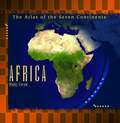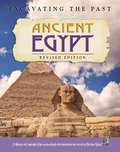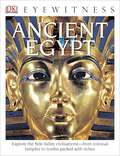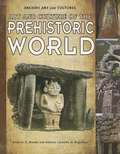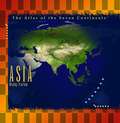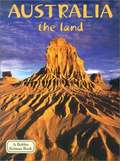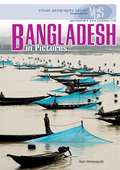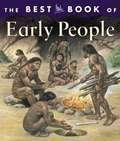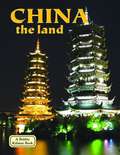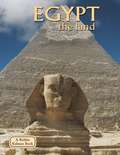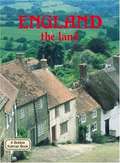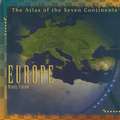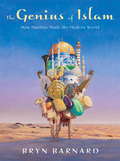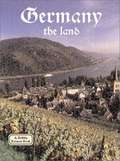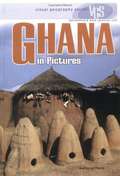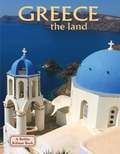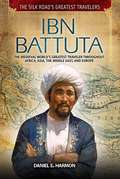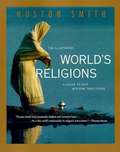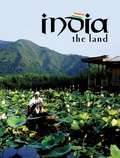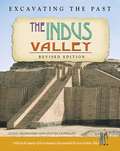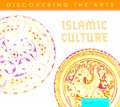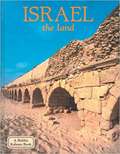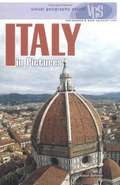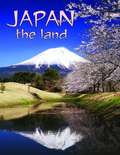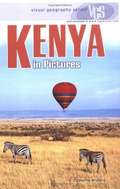Special Collections
District List: NYC Core Curriculum 6th - Social Studies
Description: The New York City Core Curriculum program aims to provide a high-quality curricula to NYC students through a seamless instructional program across grades and subjects. This list has been curated by NYCDOE for 6th Grade Social Studies materials. #nycdoe
- Table View
- List View
Africa
by Wendy VierowAfrica is a continent of 53 countries and is home to people who make up more than 800 ethnic groups. More than 5,000 years ago, the country of Egypt, located in northern Africa, was one of the world s greatest civilizations. Africa is the land of the Sahara, the world s largest desert. It also hosts the Democratic Republic of Congo, which has one of the world s thickest rain forests. Many important natural resources, from exotic animals to precious minerals such as oils and diamonds, can be found in Africa.
Ancient Egypt
by Jackie GaffBuildings, mummies, beads, pots, and bones...
Excavating the Past explores history's great civilizations through fascinating archaeological finds, Looking at excavations of historical sites and the wonderful objects uncovered, these books bring to life the excitement of archaeological discoveries.
The Egyptian civilization grew to become one of the greatest of all the ancient cultures. Around 5000 B.C.E., a complex society with advanced architecture, religious beliefs, and arts and crafts developed around the Nile River in North Africa.
The buildings and artifacts left behind have provided archaeologists with spectacular finds that reveal much about life in ancient Egypt. Book jacket.
Ancient Egypt
by George HartIn Eyewitness: Ancient Egypt, travel back in time and discover one of history's most remarkable civilizations — from the legends of the great Pharaohs to the triumphs of the ordinary people. Explore the inside of the Great Pyramid in Giza, or learn how Tutankhamun's tomb was found.
Images and supported text throughout the book showcase the pottery, weapons and other objects Ancient Egyptians left behind, the architecture they created, the food they ate, their system of Hieroglyphic writing, and more, giving an eyewitness account of this incredible empire.
Art And Culture Of The Prehistoric World
by Beatrice D. Brooke and Roberto Carvalho de MagalhãesWe know a surprising amount about how people lived before the written word. This strikingly visual book combines photographs of artifacts created by ancient humans with brilliant illustrations, and is guaranteed to appeal to students of all ages. Readers learn about the lives of early humans, from the invention of tools to their religious beliefs. They'll see that we've been a highly inventive species all along.
Asia
by Wendy VierowAtlas of the Seven Continents contains amazing continental maps and detailed information on population, beliefs, climate and vegetation, ecology and environment, economy, and politics and history. This is the best book for Geography class and for anyone who need information about any continent on Earth. Describes the continents in great detail!
Australia
by Erinn BantingEarth did not always look as it does today. Hundreds of millions of years ago, it was covered by one enormous landmass called Pangaea. About 200 million years ago, Pangaea began to split in two. Slowly, the two pieces drifted farther apart and split into even more pieces. Eventually, the seven continents formed: North America, South America, Europe, Asia, Africa, Australia, and Antarctica. Australia and Antarctica drifted the farthest south, into the southern hemisphere.
Bangladesh
by Thomas StreissguthAn overview of Bangladesh's geography and history, along with an exploration of the political, economic, and cultural landscape of this country in South Asia.
The Best Book of Early People
by Mike White and Margaret HynesChildren are very curious about who their prehistoric ancestors were, how they lived, and what they may have looked like, and The Best Book of Early People by Margaret Hynes and Mike White is just the source to satisfy emerging anthropologists. Children will learn how early families survived, hunted, gathered into primitive settlements, began to use tools, and invented farming techniques. Step-by-step illustrations and captions explore ancient villages and the work of the scientists who find and catalog their discoveries.
China
by Bobbie KalmanThe book discusses China's economy and the reforms that have happened and the status of Hong Kong and Taiwan.
Egypt
by Arlene MoscovitchEgypt is a land of timeless monuments and artifacts. It is also a land marked by the changes brought by the modern world; where camel drivers talk on cell phones and ancient tombs are moved to make way for modern dam building projects. With photographs, this work addresses the problems of pollution, global warming, and erosion on the land.
England
by Erinn BantingEngland's landscape is rich in beauty and dotted with history. From the breathtaking Lake District to the southern downs, take a journey across England.
[This text is listed as an example that meets Common Core Standards in English language arts in grades 4-5 at http://www.corestandards.org.]
Europe
by Wendy VierowEurope, the second smallest continent on Earth, has 43 countries. Some geographers consider Europe part of a landmass that includes Asia, called Eurasia. Actually, it is a large peninsula, or mass of land that is surrounded on three sides by water. Europe s climate ranges from frozen tundra to warm Mediterranean. The first great civilization in Europe reached its height in Greece about 2,500 years ago. Since then, empires have risen and fallen in Europe. Today, many different ethnic groups call Europe home.
The Genius of Islam
by Bryn BarnardThe Middle Ages were a period of tremendous cultural and scientific advancement in the Islamic Empire--ideas and inventions that shaped our world.
Did you know that:
The Muslim world has often been a bridge between East and West, but many of Islam's crucial innovations are hidden within the folds of history.
In this important book, Bryn Barnard uses short, engaging text and gorgeous full-color artwork to bring Islam's contributions gloriously to life. Chockful of information and pictures, and eminently browsable, The Genius of Islam is the definitive guide to a fascinating topic.
Germany the Land
by Kathryn LaneIntroduces the geography, cities, transportation, economy, and wildlife of Germany.
Ghana In Pictures
by Yvette La PierreIntroduces through text and photographs the land, history, government, people, and economy of Ghana.
Greece
by Sierra AdareTakes you through the ancient and modern history of Greece. This work introduces you to the ancient city states such as Sparta and the modern cities of Athens and Patras. It also includes topics such as: roads, new and old; the origins of Greece; modern industries; and tourism, fishing, and farming.
Ibn Battuta
by Daniel E. HarmonIbn Battuta, a fourteenth-century Moroccan adventurer and religious scholar, was one of the most ambitious travelers of the Silk Road. Scholars estimate his lifelong journeys covered no fewer than 75,000 miles. Because of his knowledge of Muslim history and laws, he was greatly respected by the Muslim rulers he visited. His geographical records helped fill in the pieces of a mysterious world.
The Illustrated World's Religions
by Huston Smith"In detailed, absorbing, richly illustrated, and highly readable chapters on Hinduism, Buddhism, Confucianism, Taoism, Islam, Judaism, Christianity, and primal religions, we find refreshing and fascinating presentations of both the differences and similarities among worldwide religious traditions."
India the Land
by Bobbie KalmanUpdated facts and statistics highlight this new second revised edition of India the Land. Spectacular photographs feature India's varied geography from snow-covered mountaintops to tropical rainforests. Learn about India's major cities, its disputed borders, foreign influences, and current challenges
The Indus Valley
by Ilona Aronovsky and Sujata GopinathContents include: The Lost Cities of the Indus Civilization; Constructing Great Cities (The cities of the rivers, Monumental Mohenjo-daro, An Indus Valley home, Excavating Harappa, Dholavira); Clues to Daily Living (Jobs, Figuring out figurines, Food and cooking); The Mystery of the Indus Script; Traveling Far and Wide; Craft Technology and the Art of Fire; The Rulers and People; The End of the Indus Civilization; Archaeology Today; Timelines.
Islamic Culture
by Atif ToorThis book describes Islamic art, from the building of the Dome of the Rock in Jerusalem in 691 to the work of Pakistani artist Shahzia Sikander, who expresses modern ideas in her miniature paintings.
Israel
by Debbie SmithExplores the land and people that make up modern Israel. This work portrays the country and its changing boundaries. It includes topics such as: the hills and deserts in Israel; how food is grown and the land made fruitful in the desert; protecting the land; Ancient cities and Jerusalem; and sacred city to three major religions.
Italy in Pictures
by Alison BehnkeA historical and current look at Italy, discussing the land, the government, the people, and the economy.
Japan The Land
by Bobbie KalmanThis revised and beautifully designed new edition covers every aspect of Japan's geography, natural resources, agriculture, and landforms.
Updated photographs and information on topics such as modern industry, new approaches to pollution and recycling, and high-speed trains are included.
Kenya In Pictures
by Catherine BrobergA brief overview of Kenya's land, history, government, people, and culture.
